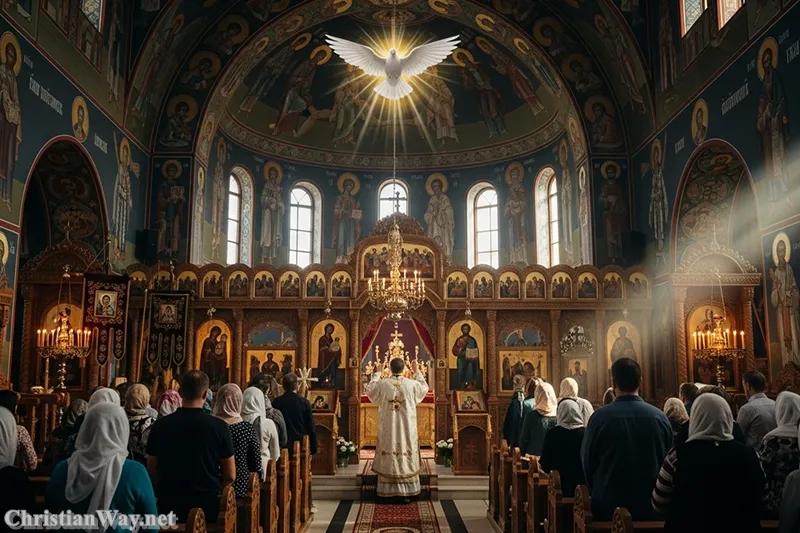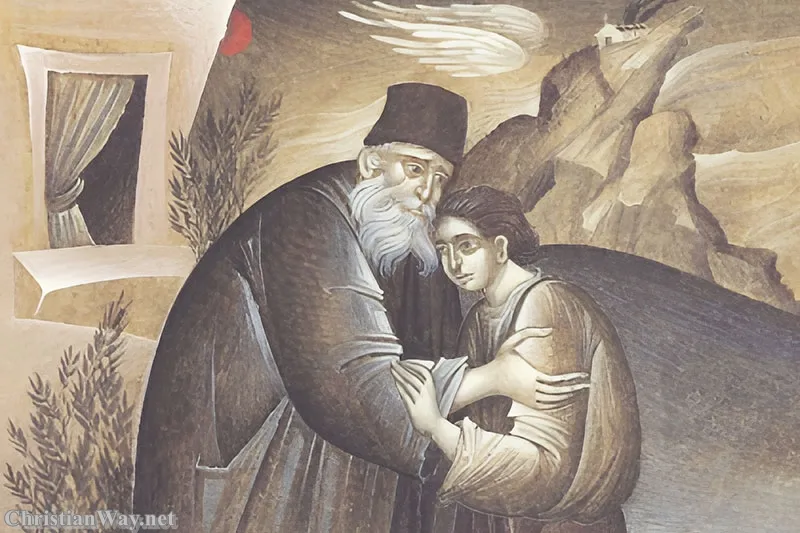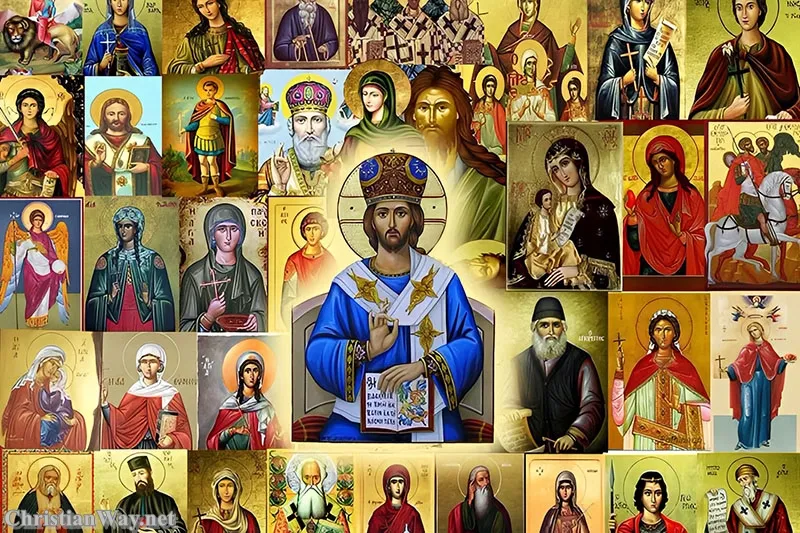Every Christian generation wrestles with the mystery of unity and diversity in the Body of Christ. From the earliest days of the Apostles, the Church has lived as one communion of faith expressed through many local communities. Over time, as Christianity spread across lands and peoples, certain Churches developed their own structures of governance, while remaining united in doctrine, sacrament, and spirit. These self-governing Churches came to be known as autocephalous Churches — a word that literally means “self-headed.”

To speak of an autocephalous Church is not to speak of separation, but of a unique form of unity — a unity expressed through freedom, a freedom ordered toward communion. Understanding this concept helps us see how the Christian Church, across its many lands and traditions, remains one living body animated by the Holy Spirit.
✝️ The Meaning of “Autocephalous”
The term autocephalous comes from two Greek words: autos (self) and kephalē (head). An autocephalous Church is one that governs itself independently — it elects its own bishops, manages its internal affairs, and maintains spiritual oversight without dependence on another Church’s hierarchy.
This concept arose primarily within Eastern Christianity, particularly in the Eastern Orthodox Church, though it also appears in some Oriental Orthodox and Eastern Catholic contexts. Each autocephalous Church remains fully part of the universal Church, professing the same faith and sharing in the same sacraments, but it functions administratively on its own.
To call a Church autocephalous, then, is to acknowledge both its maturity and its rootedness — its ability to stand on its own, yet never apart from the Body of Christ.
🌍 Historical Development of Autocephaly
The Early Church and Local Authority
In the first centuries of Christianity, local Churches were led by bishops who shared the same apostolic faith but exercised authority within their own cities or regions. The Acts of the Apostles shows this organic diversity already at work — Jerusalem, Antioch, Alexandria, and Rome each played distinct roles in the growth of the faith.
As Christianity spread through the Roman and later Byzantine empires, the Church developed a network of patriarchates: Rome, Constantinople, Alexandria, Antioch, and Jerusalem. Each was recognized as holding particular honor, but none were viewed as absolute monarchs over the others.
The Rise of National Churches
With time, as nations and peoples embraced Christianity, new Churches arose within specific cultural contexts. The Church of Cyprus became autocephalous as early as the 5th century. Later, others followed — the Churches of Russia, Serbia, Bulgaria, Romania, and Greece each received or declared autocephaly at different points in history.
These developments reflected the spread of the Gospel into new lands and languages. The independence of these Churches was often intertwined with political and cultural realities, yet at its heart, the goal remained the same: to preserve the unity of faith while allowing local expressions of Christian life to flourish.
🕯️ Autocephaly in the Eastern Orthodox Tradition
Within the Eastern Orthodox Church, autocephaly is a central feature of its structure. The Orthodox communion today consists of fourteen (sometimes counted as fifteen) autocephalous Churches, including:
- The Ecumenical Patriarchate of Constantinople
- The Patriarchate of Alexandria
- The Patriarchate of Antioch
- The Patriarchate of Jerusalem
- The Churches of Russia, Serbia, Romania, Bulgaria, Georgia
- The Churches of Cyprus, Greece, Poland, Albania, the Czech Lands and Slovakia
Each of these Churches governs its own internal life but remains united with the others in faith and sacrament. No single bishop or patriarch holds universal jurisdiction; rather, they recognize the Ecumenical Patriarch of Constantinople as “first among equals” — a symbol of unity, not of domination.
This system reflects a theological truth: that the Church is one body made up of many members (cf. 1 Corinthians 12:12). Just as no part of the body exists for itself alone, no autocephalous Church stands apart from the communion of others.
🕊️ Theological Meaning of Autocephaly
Unity in Diversity
The concept of autocephaly embodies the balance between unity and diversity in the Church. It acknowledges that while Christ is the single Head of His Body, His presence is expressed through many local Churches, each living the same Gospel in its own language, culture, and history.
This unity is not enforced by legal authority but sustained by love and faith. The Holy Spirit is the bond of communion, not a human institution. St. Paul’s words echo here: “There is one body and one Spirit… one Lord, one faith, one baptism” (Ephesians 4:4–5).
Apostolic Continuity
An autocephalous Church is not independent in doctrine; it remains rooted in the Apostolic Tradition. Its bishops are successors of the Apostles, and its teachings conform to the faith handed down from the early Church. Autocephaly refers to administrative independence, not theological innovation.
This distinction is vital: autonomy in governance does not mean autonomy in truth. Christ alone remains the Head of the Church, and all true autocephalous Churches seek to preserve His teaching faithfully.
🏛️ How Autocephaly Is Granted
The process of granting autocephaly has varied throughout history and has often been complex. Traditionally, a new Church’s autocephaly was recognized by the Ecumenical Patriarch of Constantinople or confirmed by a pan-Orthodox consensus.
In modern times, however, questions of autocephaly have sometimes led to tension within Orthodoxy — as seen, for example, in debates surrounding the Orthodox Church of Ukraine, whose autocephaly was granted in 2019 by the Ecumenical Patriarchate but contested by the Russian Orthodox Church.
These disagreements, while painful, reveal the ongoing challenge of living out unity amid diversity. The goal remains not division, but communion — that every Church, in its own way, may serve the same Christ and proclaim the same Gospel.
💬 Autocephaly Beyond Orthodoxy
While the term “autocephalous” is most closely associated with Eastern Orthodoxy, similar concepts exist in other traditions.
In the Oriental Orthodox Churches (such as the Coptic, Armenian, and Ethiopian Churches), each Patriarchate is self-governing but shares faith and sacramental life with the others.
In the Eastern Catholic Churches, there are sui iuris Churches — a Latin term meaning “of their own law” — which function similarly to autocephalous Churches. They are self-governing in many respects but remain in full communion with the Bishop of Rome (the Pope).
These parallel structures show that the idea of local governance within global unity is not unique to one branch of Christianity. It reflects a universal principle: that the Church, though one in faith, is richly diverse in form.
🕊️ The Spiritual Lesson of Autocephaly
The deeper meaning of autocephaly is not institutional but spiritual. It reminds us that Christian unity is not uniformity. The Holy Spirit breathes through many languages, cultures, and traditions — yet all proclaim the same Lord Jesus Christ.
In a world often divided by nationalism and pride, true autocephaly calls for humility. A Church that governs itself must also guard against isolation. Independence must serve communion; freedom must serve love.
St. Ignatius of Antioch, one of the earliest Church Fathers, wrote that where the bishop and the faithful are united, there Christ is present. This unity, born of love, transcends borders and jurisdictions.
🌿 Living Communion Today
For believers today, understanding autocephaly invites us to a broader vision of the Church. It reminds us that the Body of Christ is vast — stretching from the ancient monasteries of Mount Athos to the cathedrals of Rome, from the deserts of Egypt to the forests of Russia.
To be Christian is to belong to this great communion of love, even when expressed through different traditions and leaderships. The mark of a true Church is not its independence but its faithfulness — faithfulness to Christ, to the Apostles, and to one another.
🙏 Reflect and Pray
The autocephalous Church stands as a living witness to the harmony of freedom and unity in Christ. It teaches us that spiritual maturity does not mean breaking away, but standing firm in truth while remaining open to communion.
As members of the one Body of Christ, we are all called to this same balance — to be faithful and free, rooted and receptive, steadfast and loving.
Let us pray:
Lord Jesus Christ, Head of the Church,
You have made us one body through Your Spirit,
yet have called us to serve You in many lands and languages.
Teach us to value the gifts of each local Church,
to rejoice in diversity without losing unity,
and to love one another as You have loved us.May every Church, whether great or small,
live not for itself, but for the glory of Your Name.Amen.
— Fr. John Matthew, for Christian Way





